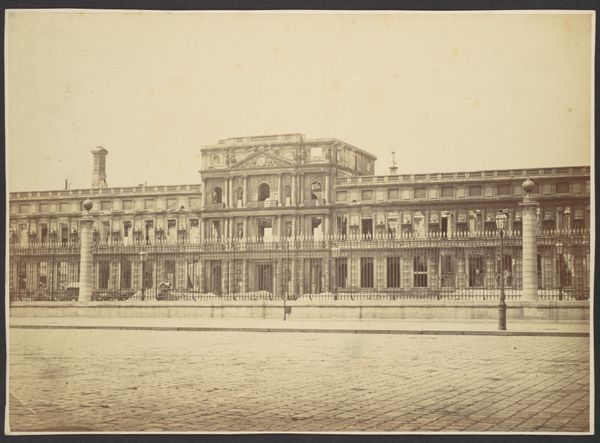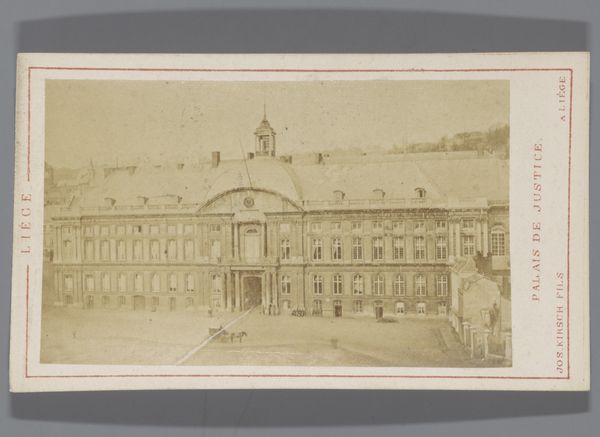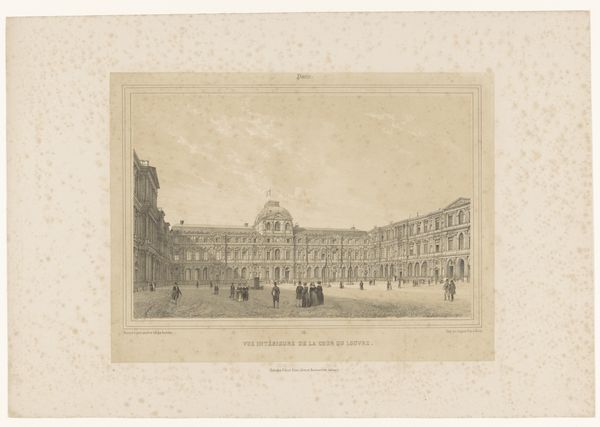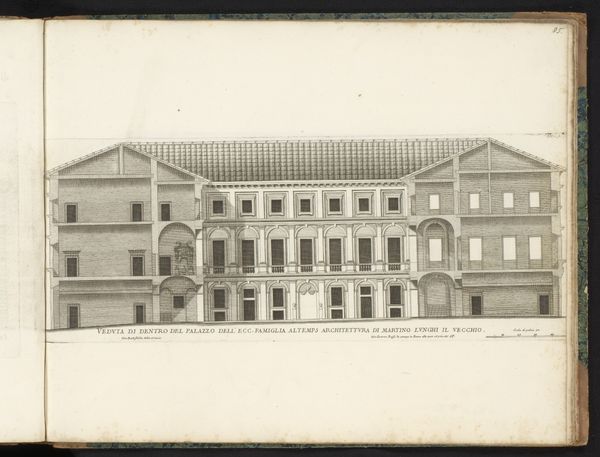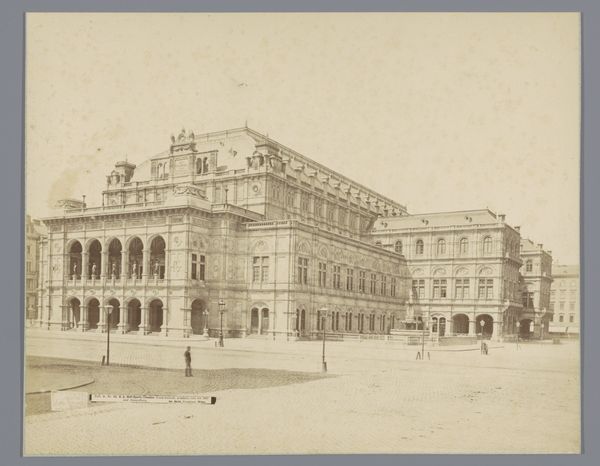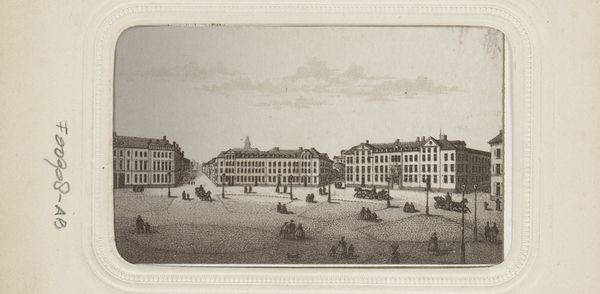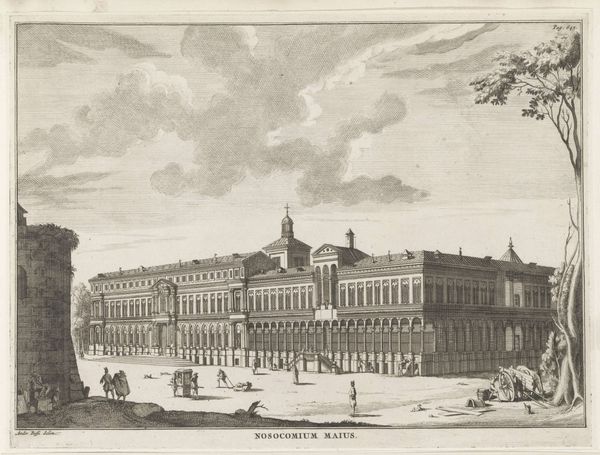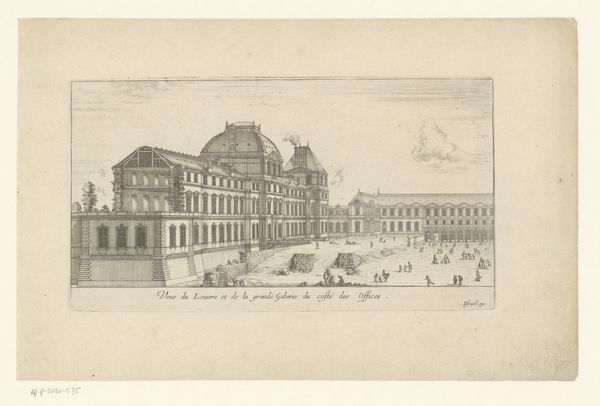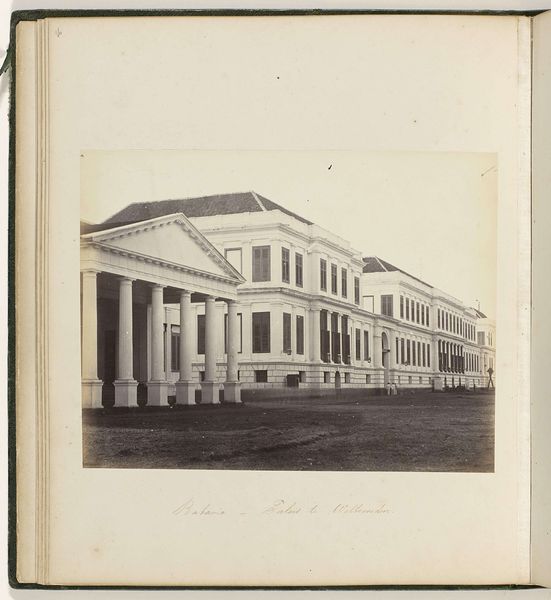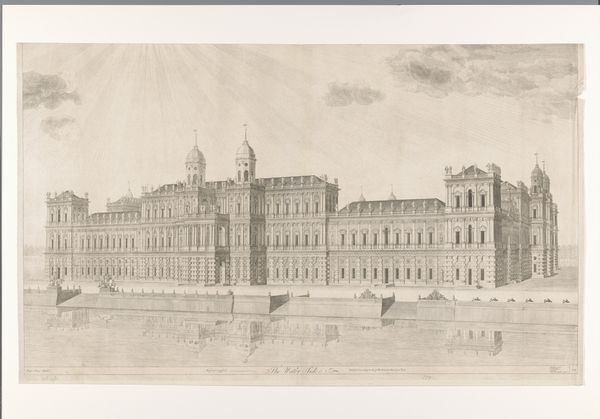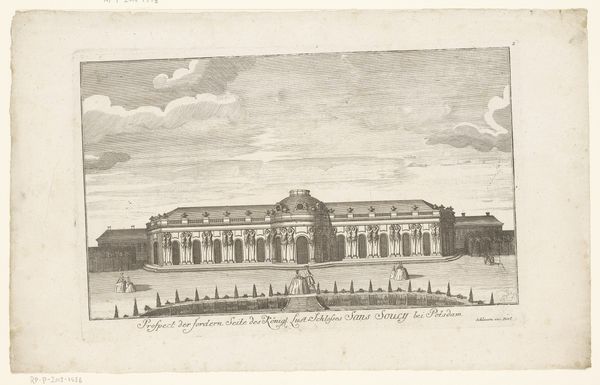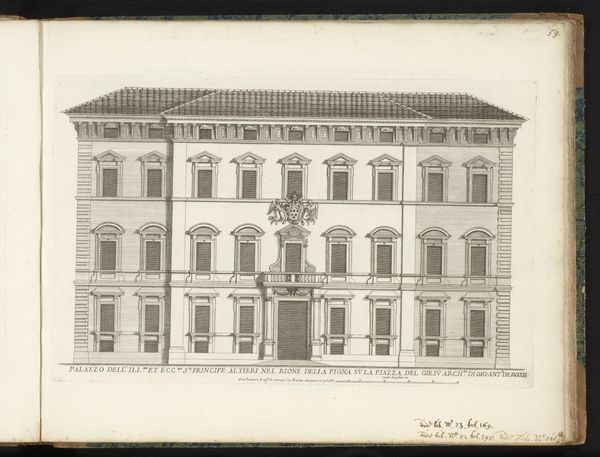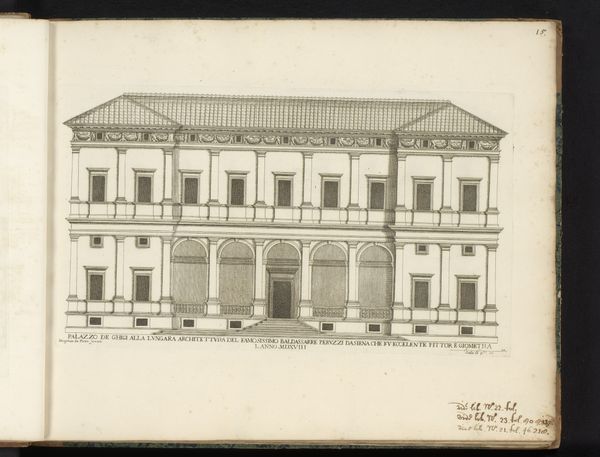
albumen-print, print, photography, albumen-print, architecture
#
albumen-print
#
print photography
# print
#
landscape
#
outdoor photograph
#
archive photography
#
photography
#
historical photography
#
cityscape
#
albumen-print
#
architecture
Dimensions: 6 15/16 x 9 5/16 in. (17.62 x 23.65 cm) (image)
Copyright: Public Domain
Curator: Giorgio Sommer's "Palazzo Reale," dating from the late 19th to early 20th century, offers a view of the Royal Palace in Naples, captured in an albumen print. Editor: The scale of the architecture is grand, and the palette creates an atmosphere of aged solemnity. I’m also drawn to the stark emptiness of the piazza. Curator: Indeed. Sommer employs a rigorously frontal composition. The facade is presented with a deliberate evenness, each window a module in a larger system of architectural language. Note how the photographic surface itself contributes a subtle grain, lending an almost textural quality. Editor: I'm particularly interested in what that photographic process entails for documenting architecture. Each print involved a series of labor-intensive processes, from coating the paper with egg whites to careful exposure and development. The materiality of albumen printing speaks volumes about the time and resources invested in producing this kind of imagery. Curator: And, returning to form, observe the placement of the equestrian statue. It introduces a dynamic counterpoint to the static building, a subtle yet effective manipulation of pictorial space. The gaze of the rider almost acknowledges the viewer, drawing us into the scene's narrative. Editor: The question then becomes, what is that narrative? Who was able to afford prints like these? To whom does this palace speak, and what class or privilege do they wield to consume the imagery? We’re not just observing a building; we’re witnessing a social hierarchy mediated by a specific kind of material production. Curator: A valid consideration. Though, even devoid of its historical context, the print resonates with a powerful stillness. The rigid geometry elicits feelings of monumentality. Editor: The print becomes a relic, prompting me to imagine all hands that made this and their proximity to the kingdom it shows. Curator: A compelling perspective, acknowledging how the physical and social conditions shape how the aesthetic outcome, how the work and context can intertwine our perceptions.
Comments
No comments
Be the first to comment and join the conversation on the ultimate creative platform.
